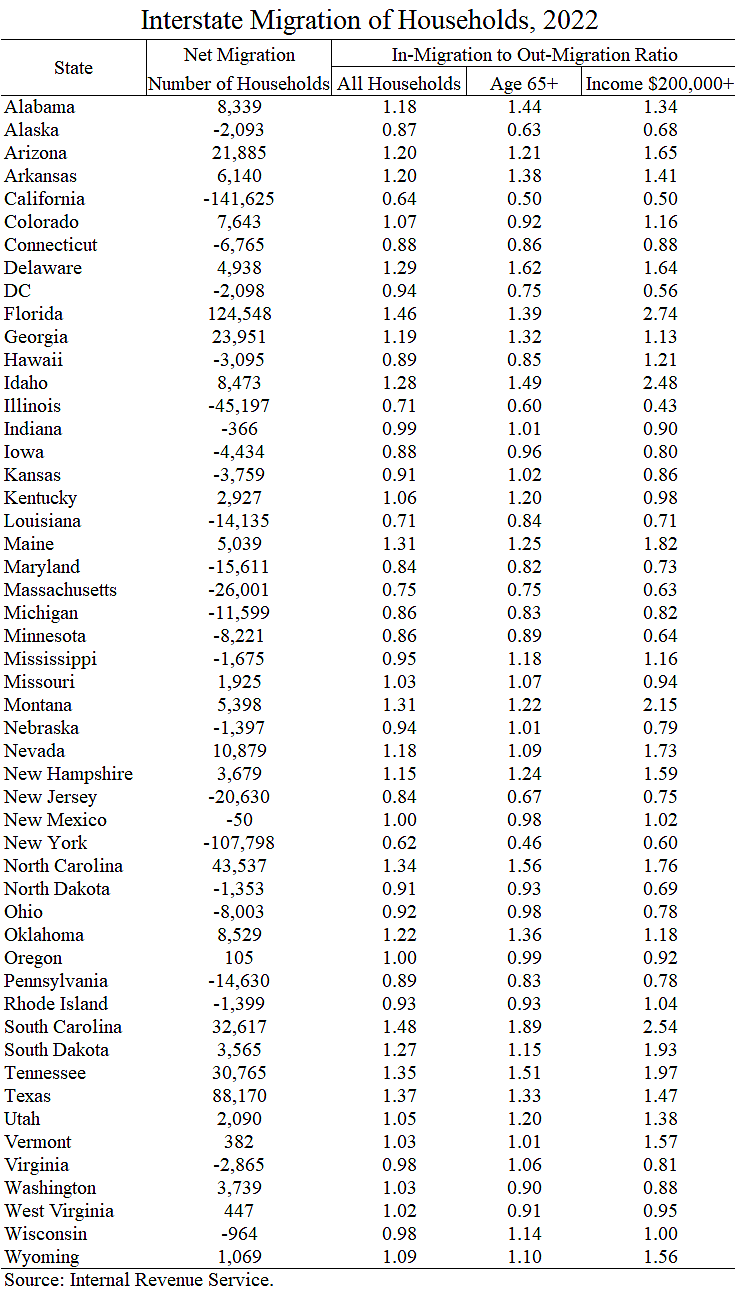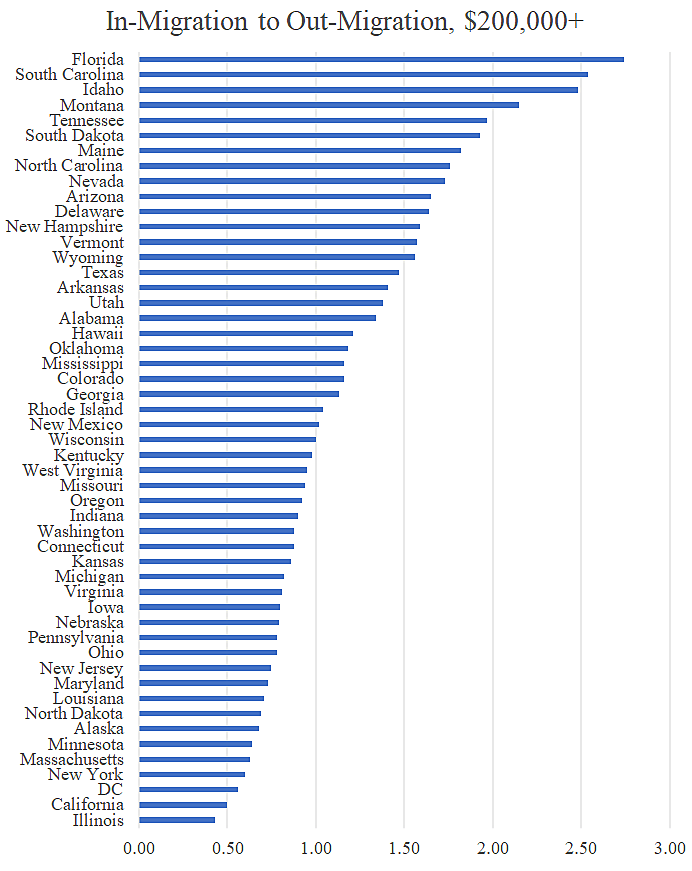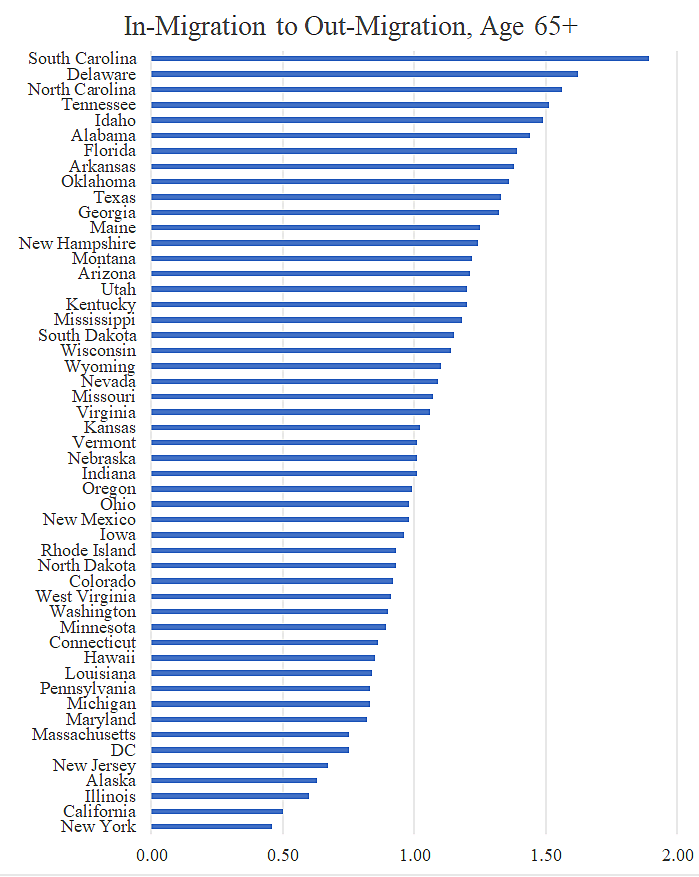Which states are Americans moving to and which are they leaving?
The Internal Revenue Service (IRS) has released interstate migration data for 2022. The data include the domestic movements of households into and out of each state broken down by income level and age group.
The table shows the net migration for each state and the ratios of in-migration to out-migration for all households, households headed by an individual age 65 and older, and households earning more than $200,000 a year.
Looking at all households, for example, 1.46 households moved to Florida for each one that left, and 0.71 households moved to Illinois for each one that left.
People move because of jobs, living costs, weather, and family. Taxes are also an important driver of migration, particularly for higher-income households. States with lower taxes tend to have higher ratios of in-migration to out-migration.
The figure ranks migration ratios for households earning more than $200,000. Of the 9 states that do not have individual income taxes, 7 of them are in the top 15 states for in-migration (Florida, Tennessee, South Dakota, Nevada, New Hampshire, Wyoming, and Texas). Only 3 states in the top 15 have above-average tax burdens (Delaware, Maine, and Vermont).
At the other end, high-tax Illinois is losing more than two high-earning households for every one that it gains. States such as Illinois, California, Minnesota, New Jersey, and New York have been losing high earners for years, which is undermining their economies. Yet, as explored in Cato’s new Fiscal Report Card to be released in October, governors in these states seem oblivious to the talent drain their high-tax policies are causing.
The next figure ranks migration ratios for households age 65 and over. States view these households as desirable in-migrants, and many have cut taxes on retirement income to attract them. Seniors may be particularly responsive to taxes because they can decide where to move when their careers end.
I examine interstate migration further here, here, here, here, and here. Krit Chanwong contributed to this blog post.



